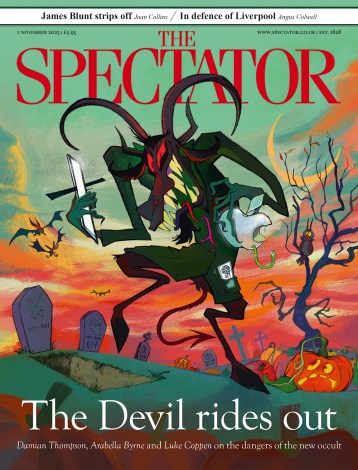The Escorial, as a monastery and a royal palace, was the brain child of Philip II of Spain. Built in the latter half of the 16th century, about 30 miles north-west of Madrid, the huge granite complex with 4,000 rooms, 16 courtyards, a basilica, a library and picture gallery as well as the king’s private apartments, came to be regarded as the creation of a cold-hearted despot cut off from the outside world. For Richard Ford, whose 1850 Handbook for Travellers in Spain is the most learned guidebook ever written, the Escorial ‘was as cold as the grey eye and granite heart of its founder’. For the 19th-century conservative Spanish statesman, Antonio Cánovas, the Escorial, ‘a mountain of stone, uniform, monotonous, built for eternity, was the true reflection of the soul of Philip II’.
Henry Kamen inveighs against this still prevalent gloomy view, and denounces his professional colleagues for ignoring historical sources to suit their polemical purposes. Philip and his sisters, he maintains, played practical jokes on the monks of the Escorial. The king enjoyed hunting, and his love of the countryside was Wordsworthian. On his journey to the Netherlands, Germany and Italy between 1548 and 1550, he was ‘an open-minded young man, eager to learn’. The buildings he saw in Flanders were a major influence on the architecture of the Escorial. He introduced Flemish gardening to Spain; and patronised, among many others,Titian and the Flemish artist Antonis Mor, who painted one of the best of many portraits of the king. The Escorial was to house a collection of 1,600 pictures.
Fernand Braudel, the French historian of Philip’s Mediterranean empire, once wrote: ‘Philippe II à l’Escurial, c’est Louis XIV à Versailles’. This is untrue. Louis, as the Sun King, presented himself as an absolute monarch. Philip, by contrast, saw himself as the servant of God. He disliked being addressed as ‘Majesty’, and never claimed, as did the English monarchs, that the royal touch could cure the sick. Yet while Elizabeth I could rally her subjects from her saddle before the Armada, at Tilbury, it was inconceivable that Philip should leave the Escorial and ride about the streets of Madrid making similar patriotic appeals. In one of his best passages, Kamen describes both sovereigns as reluctant pessimists. Elizabeth resisted the pleas of Protestants such as Walsingham to attack Spain, while Philip found the Pope’s demands for a Holy War irritating, and the burning of heretics distasteful.
Philip was the only sovereign who attended the Council of Trent, and he enthusiastically adopted its decrees. According to Kamen:
There is absolutely no doubt that Philip’s religious policy was forward looking, even revolutionary. Never a religious conservative, Philip embraced change with enthusiasm.
Yet this modernising monarch was filling the Escorial with 7,000 relics, including 10 whole bodies, 144 heads, 306 arms and legs as well as hairs of Christ and fragments of the True Cross. It is not surprising that Protestants should regard all this as stuff and nonsense.
Philip was undoubtedly devout and austere, setting aside long periods for private devotion. Kamen’s version of the reign is a distinctly Catholic one. But some readers may find his own polemics rather heavy-going.






Comments